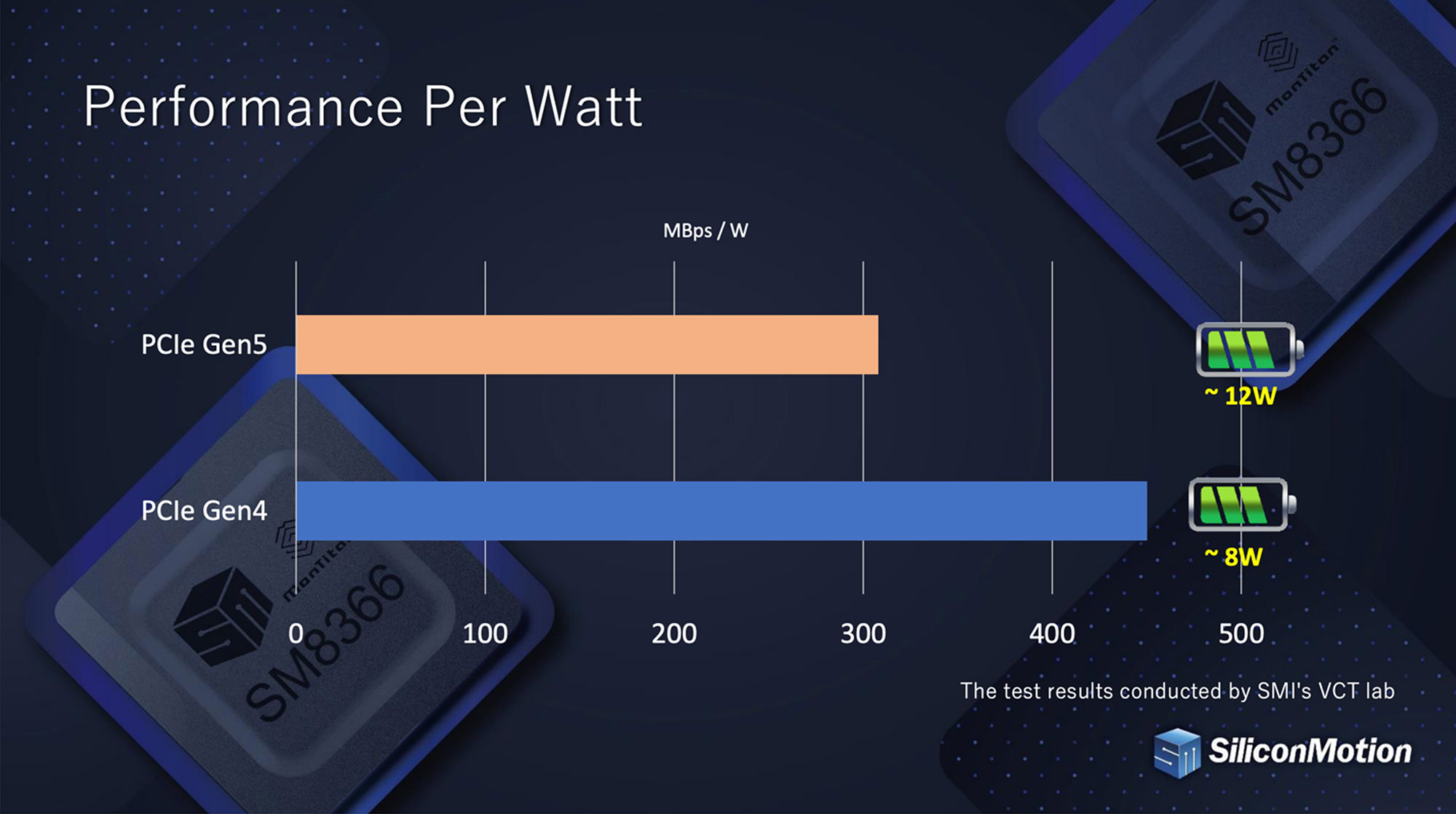Application Study: Notebooks with PCIe Gen5 SSD
Background
Solid-state drives lack integrated cooling systems, and there is no practical space in a notebook computer to add more cooling capability.
As the industry migrates to PCIe Gen5,
Silicon Motion projects below that total power consumption will increase by ~50% despite improvements in MBps/W. They discuss ways to reduce power, including advanced process nodes, more efficient ASIC designs, et al., that could reduce power to ~10W, which is still a 25% increase over Gen4.
This increase in power will further complicate the heat dissipation challenge forcing manufacturers to adopt expensive heat shields and other techniques to cope without directly resolving the issue – generating less heat.
Endura Technologies Solution
Endura Technologies’ power delivery architecture is ideal for these applications. Endura Technologies’ modular digital control and use of advanced semiconductor process technology enable industry-leading efficiencies and high-speed switching for smaller footprints. This scalable architecture ranges from standard power management devices (sVR or PMIC) to embedded (eVR
™) chiplets down to on-chip, integrated (iVR) blocks for optimum point-of-load energy delivery.
Since Endura Technologies’ architecture is highly efficient at power conversion, less heat is generated in the system. High efficiencies are maintained over the full load range, saving power for both light and heavy loads, which is important for Notebooks and other battery-operated devices.
Endura Technologies’ architecture was implemented as a JEDEC 5100 sVR for DDR5 applications. This solution is extendable to SSD solutions. Further system optimizations are possible with Endura Technologies’ high-speed switching (up to 150 MHz) eVR and iVR technologies, which are small enough to be placed very close to where the power is needed to improve system performance further.
Benefits
Improving power conversion efficiency for both light and heavy loads means less wasted power, which directly reduces the heat generated.
With eVR and iVR point-of-load power delivery, compute/watt performance can be optimized, which makes the system more efficient, thus reducing the power needed.
Also, point-of-load delivery also means fewer power rails and routing in the system. Thus, the delivery of energy to the power conversion point is optimized, reducing wasted power in the system, which reduces heat.
These are compounding benefits – improved compute/watt (less power needed) coupled with more efficient power delivery (lower system loss) coupled with more efficient power conversion (reduced conversion loss) – all combine to directly eliminate heat in the system.
Reducing the heat generated is a direct way to address cooling challenges facing PCIe Gen5 SSD and beyond.
